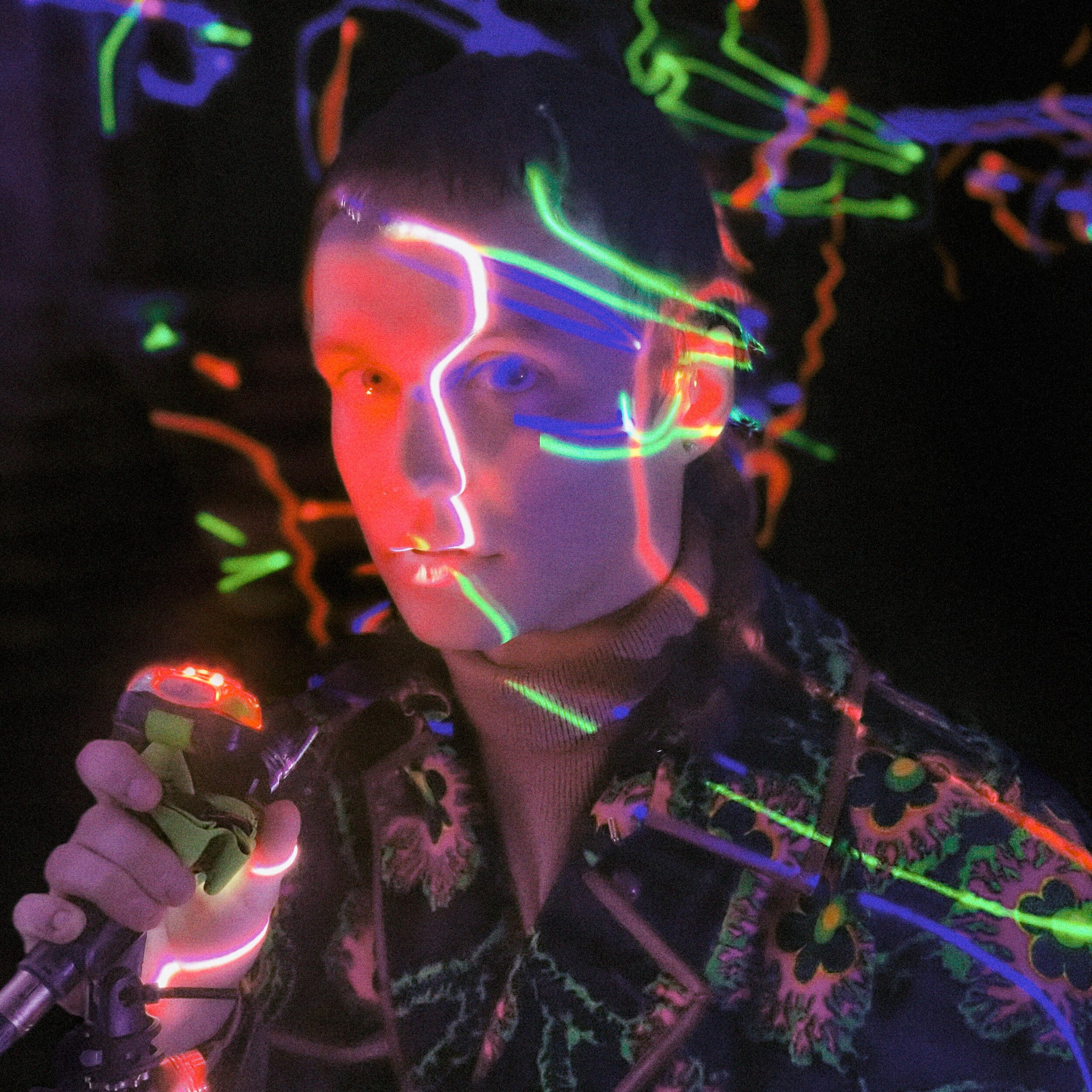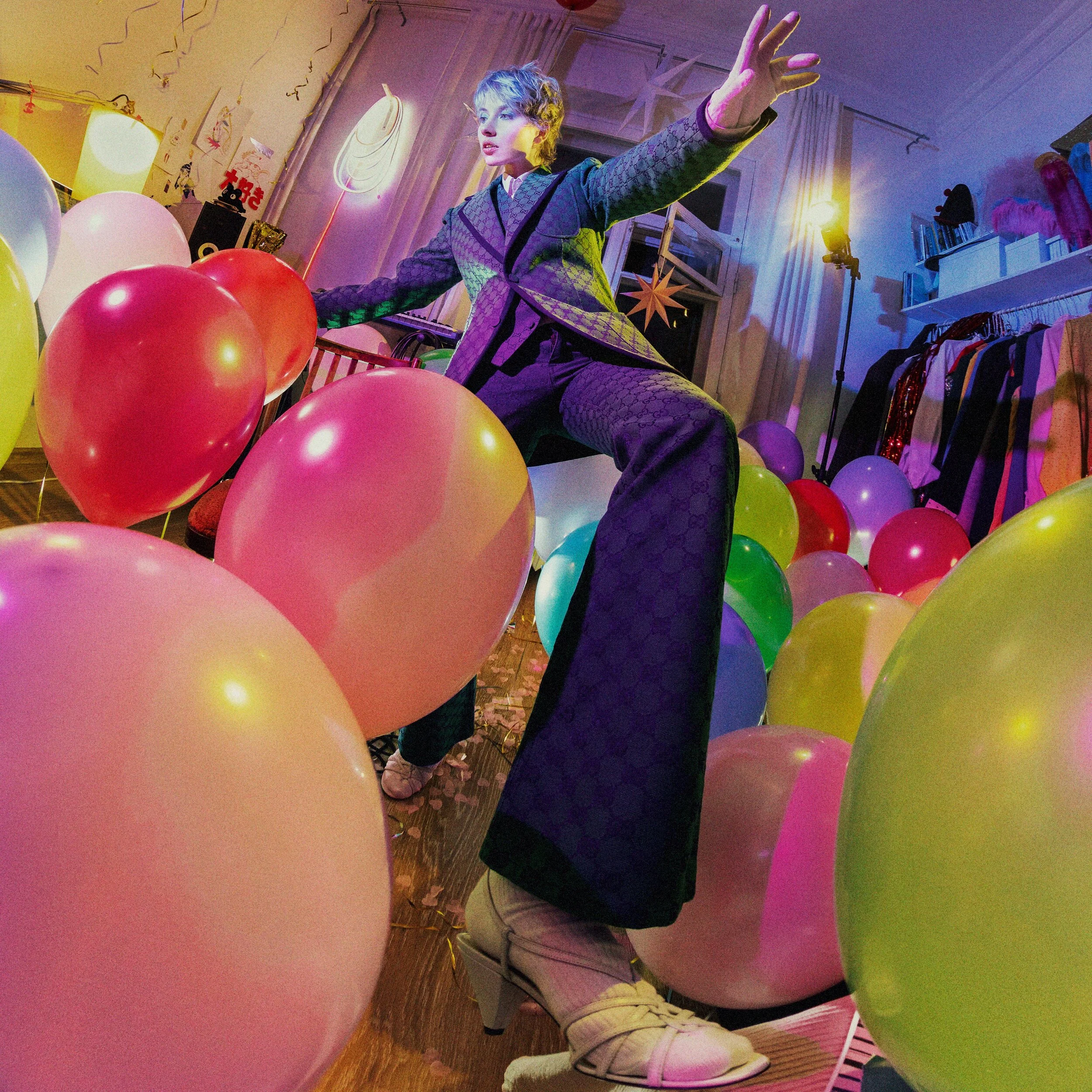Madeline Schwartzman is our IRL Mother Nature.
NYC-based visual artist Madeline Schwartzman has turned her own body into an eco-canvas by creating visual art through foraging and engaging with the world of the outdoors. Fuelled by her message about the crucial importance of reconnection with nature, Schwartzman discusses how her masters degree in architecture and passion for writing have inspired her to create her first visual body of work: Face Nature.
Perfect: How would you describe your work and the art you create?
Madeline Schwartzman: My recent body of work is called Face Nature. I take regular hikes on trails in New England and around NYC and I forage for leaves, seeds, or whatever strikes me on that day. I return home and within 24 hours I make an installation on my body, photograph it, and then destroy the work. Face Nature isn't about ornament. There are two main ideas behind it. The first has to do with the planet. In the 21st century we've inherited the idea that nature is "over there." It's far away. It's a distant landscape. I think that is part of the reason why the planet/climate is in trouble now. By engaging in Face Nature, I'm bringing nature super close to me. I'm breaking that boundary and the result is eye-opening for both me and the viewer. For me, it's an education. I learn about catapulting pollination in mountain laurel, seed dispersal, and hybrid organisms. For the viewer it's a wake up call. People seem to respond in visceral ways by getting closer to nature.
The second idea behind the work relates to my book writing. I write about the body, the senses, and human morphology. When I install nature on my face, I am thinking about how human morphology might be different. We have so many preconceptions about the human face and body. Things may need to change, as we expand beyond our planet.
Perfect: Which have been some of the most defining moments in your artistic career?
Madeline Schwartzman: I'm about to have a big solo exhibition at the Berkshire Botanical Garden. I'm bringing my work to a place that it was born out of, since my daughters and I volunteered there the summer of 2020. I've also made work out of some of the garden's discards. My first serious work of the Face Nature series began on the island of Koh Lon in Thailand at the Digital Naturalism Conference 2018. It was incredible to be on an island with amazing artists like Michael Candy, David Bowen and others. One of the two people who ran it - Andrew Quitmeyer - does everything, from helping with servo motors and Arduino, to taking brilliant photography and video. He'll be running the third Digital Naturalism Conference in Sri Lanka this summer and I hope to be there.
Perfect: What first inspired you to work with your body and nature?
Madeline Schwartzman: I wrote a book called See Yourself Sensing: Redefining Human perception, about projects that engaged the body and the senses. That book came out of my studio project I teach at the Barnard + Columbia Architecture Program. I would ask students to analyse the senses, and to then create a head-based construction that highlighted and analysed the senses. It was natural for me to begin to make head-centered work. Nature came from time backpacking on the Appalachian Trail with my high school friend Debbie.
Perfect: What influences you when creating one of these pieces?
Madeline Schwartzman: Once I forage, the bells start ringing. Sometimes I know what I'm going to do and other times I have to sit and observe the leaf or seed for a while. A good example of this would be the cone flower thistle. I collected five or six, and brought them home. I knew they were amazing but I had no idea what to do with them and felt at a loss. I thought to wrap my hair around one. That was it. It was fantastic. I could make extraordinarily big hair, and even use them with pulleys to make my hair defy gravity. I don't think much once I start facing nature. It's a very calm, meditative process (until the artifacts start falling off). It's an observational process, an art process, and a kinesthetic touch-based process. Lots of brain bells go off.
Perfect: What is the process behind your craft and what do you enjoy most about it?
Madeline Schwartzman: I am crazy about taking walks in forests, fields, and new places. I feel so happy in the woods. Daylight Savings has cut into my hiking time. I just took out my head lamp and started walking through the woods in the dark
Perfect: Which are some of the best reactions and interactions you have received from your work?
Madeline Schwartzman: Here's a note someone just sent me on Instagram: "I've been following you for a while now (@seeyourselfsensing) and the more content I see, the more my body craves to do this. I think it opens up a door of curiosity and it's a perfect way to bring humans back to nature."
There's an uncanniness to some of the work. Some of it is beautiful and Victorian, some of it is deathly. Often it's hard to take your eyes off of it. Humans like looking at transformed humans.










